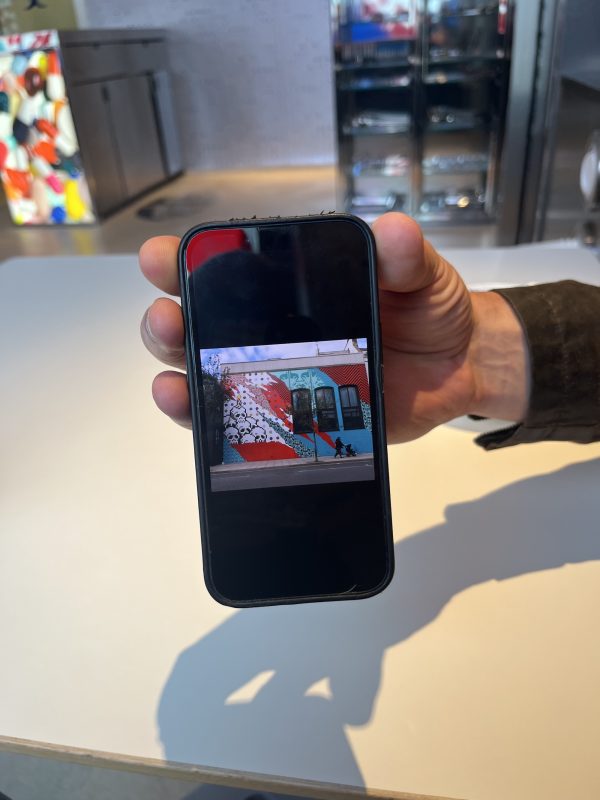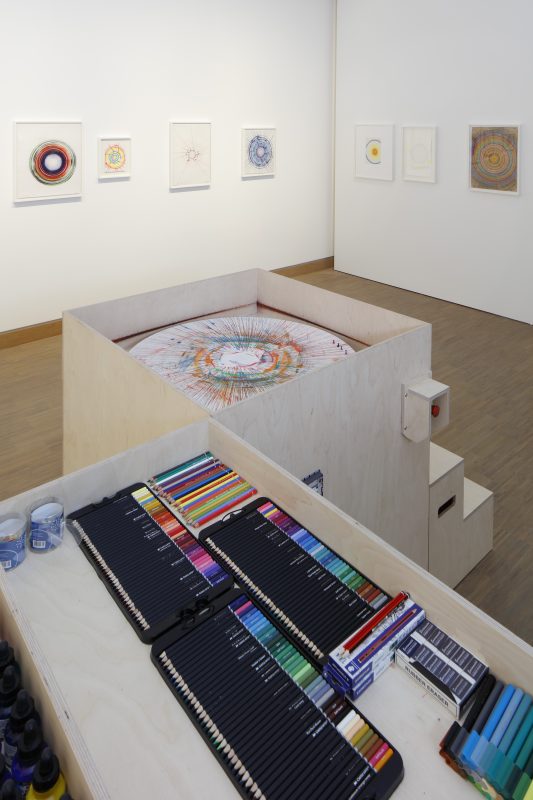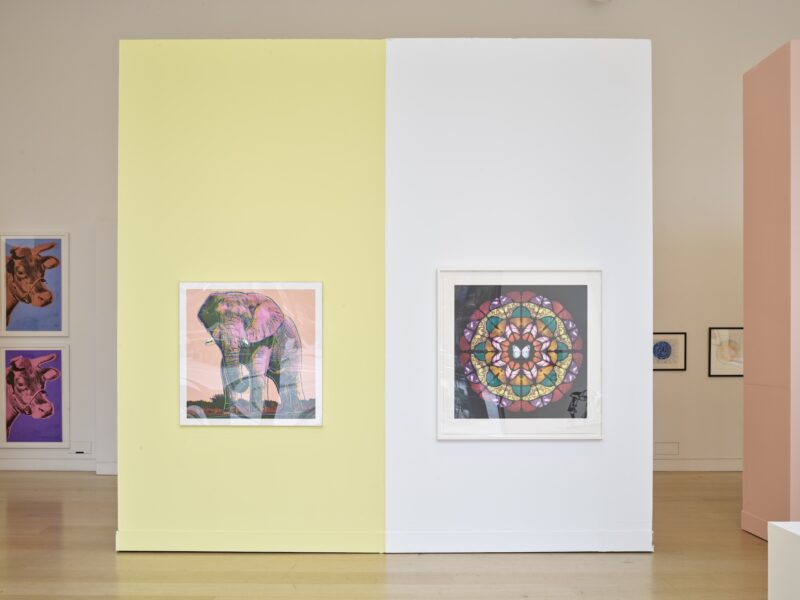Now, two of Britain’s finest are in Munich. Over at the Allianz Arena, Harry Kane is banging in the goals for Bayern Munich and at MUCA ( Museum of Urban and Contemporary Art) Damien Hirst has opened his show ‘The Weight of Things’.
Featuring 40+ works spanning Hirst’s career with installations, sculptures, and paintings, some of which have not been seen before, the exhibition includes some of Hirst’s most recognisable hits including: Natural History (formaldehyde sculptures), Spin Paintings, Medicine Cabinets, Treasures from the Wreck of the Unbelievable, Cherry Blossoms, and Spot and Butterfly paintings.
One of the highlights of the show is For the Love of God (2007) a platinum cast of a human skull covered by 8,601 diamonds (the most expensive contemporary artwork ever made) is exhibited in a bunker and on show until 28th January 2024.
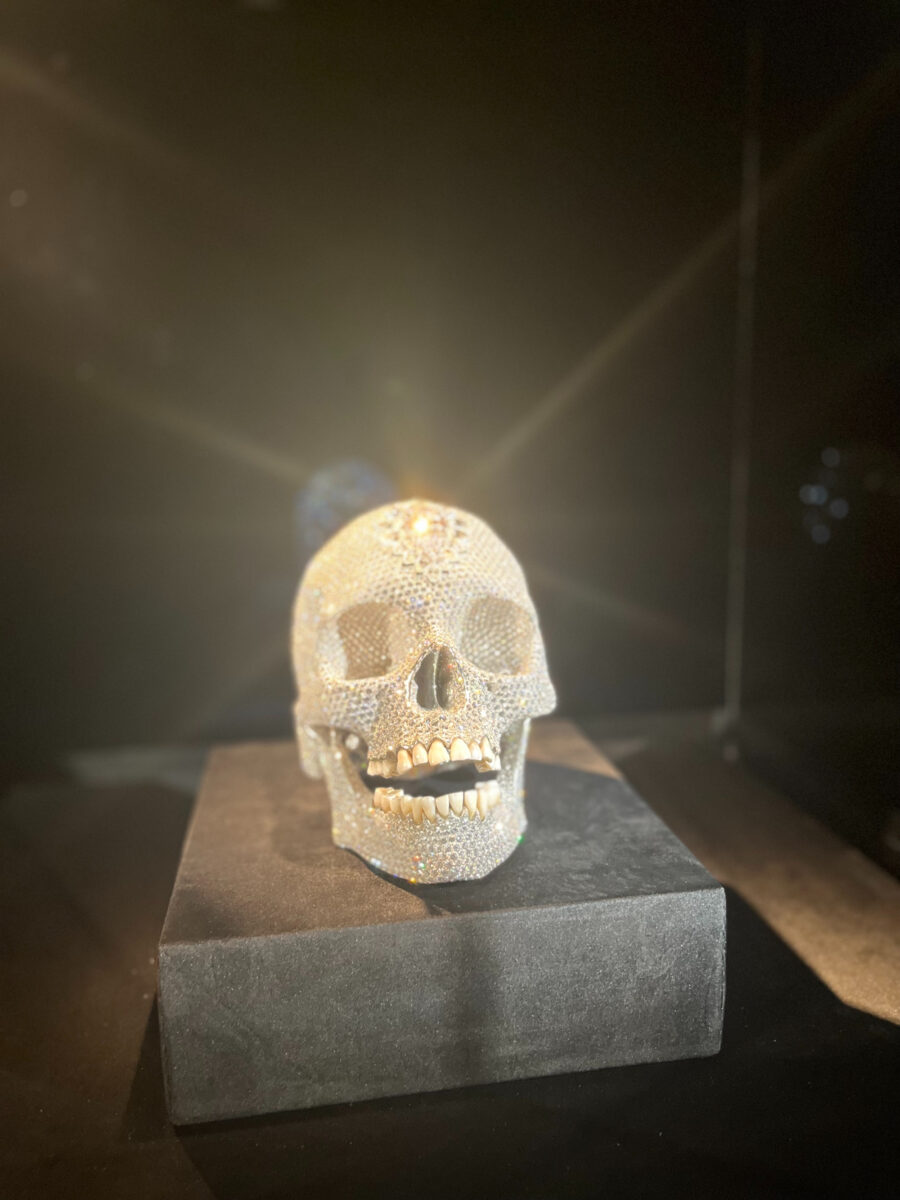
Also in front of the museum painted on a functional power station is the largest Hirst spot painting ever made.
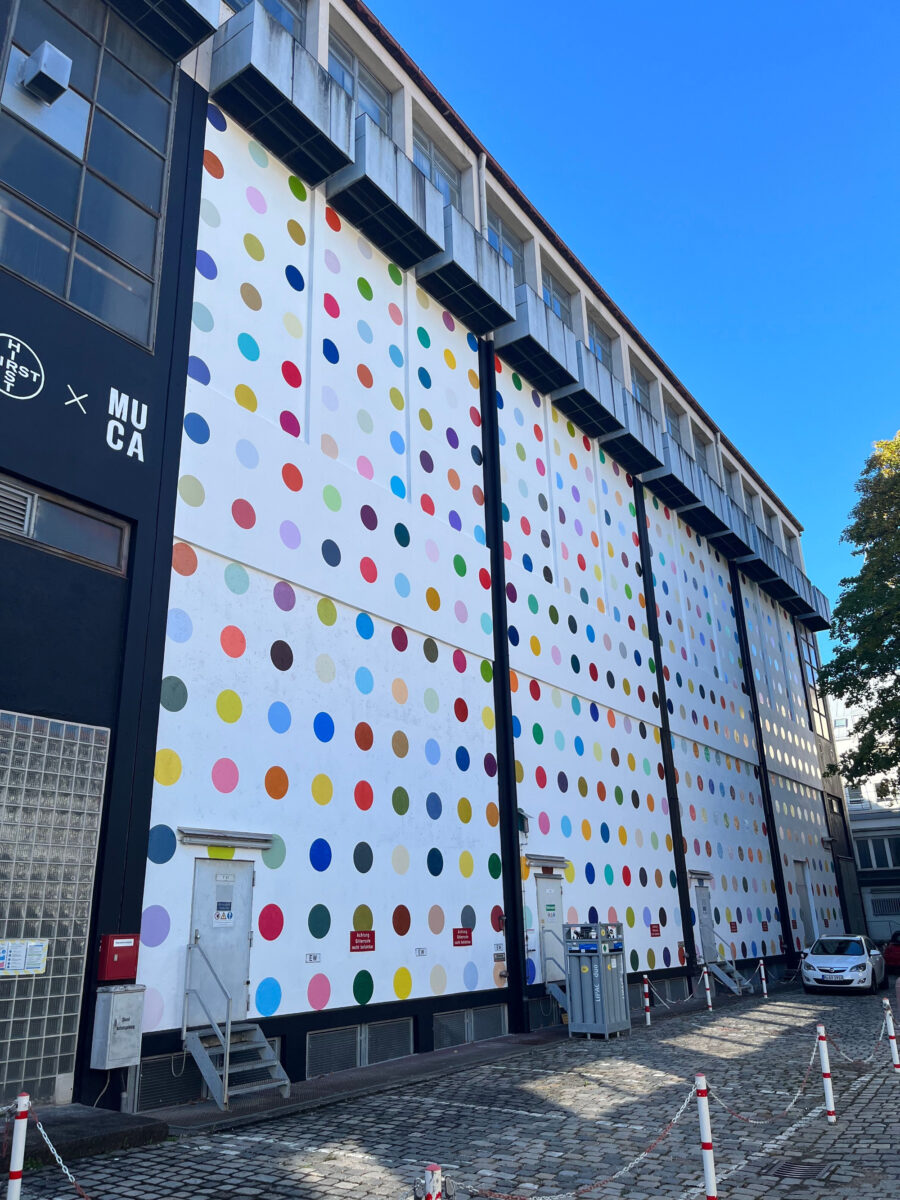
I’m so happy and excited to be invited by Christian and Stephanie Utz to put on this exhibition, The Weight of Things, in Munich, where I have the opportunity to show many of my earlier works through to my later series like works from Treasures from the Wreck of the Unbelievable. And a giant new outdoor spot painting that is visible from all over the city. I’m so pleased to be working on this show and bringing it all together for such a unique and dynamic space at MUCA.
Damien Hirst
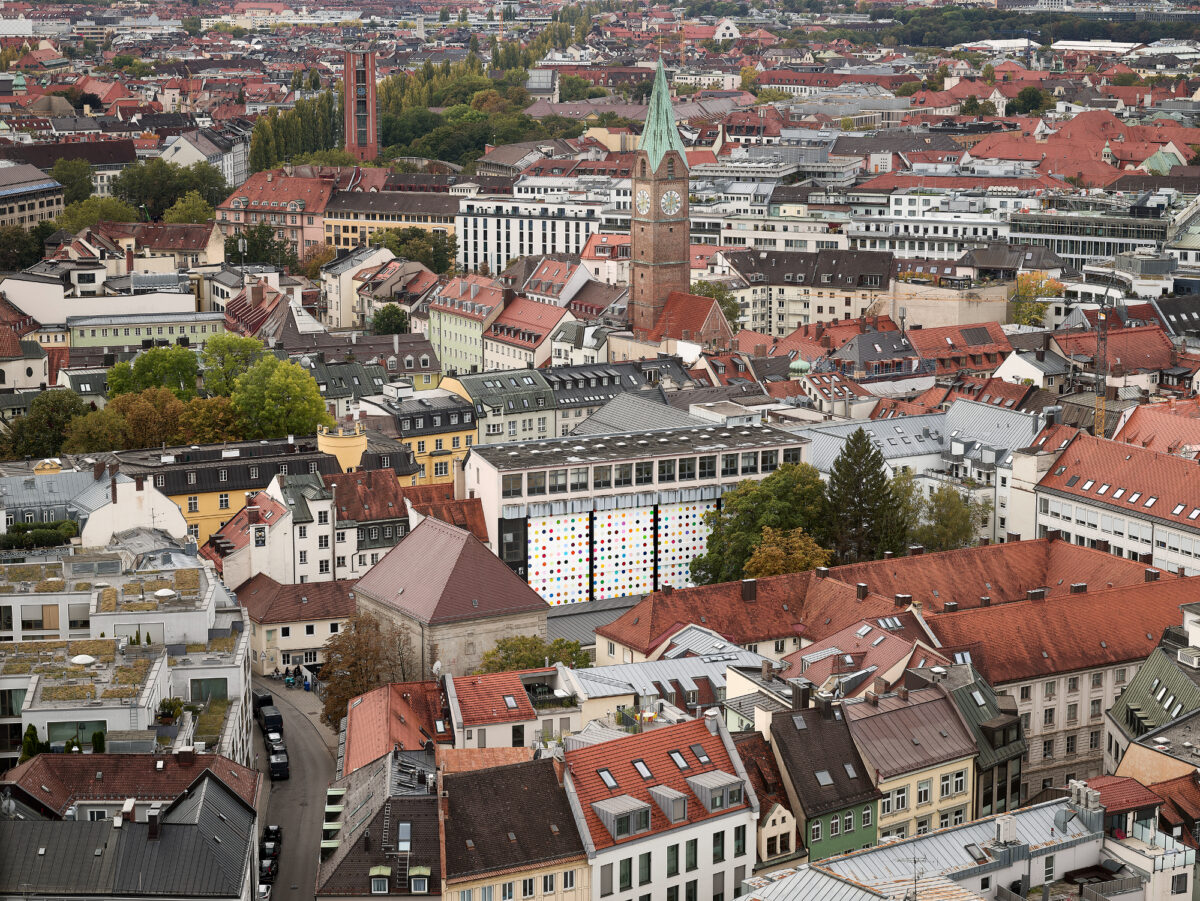
The show explores the emergence of Hirst’s most famous themes. Throughout his career, Hirst has reflected on the complex relationships between beauty, religion, science, life, and death. What makes the exhibition intriguing are the rarely-seen works, such as ‘When Logics Die’ (fig. 154), 1991. This work places later works, such as Hirst’s medicine cabinets, into a new and thought-provoking context.
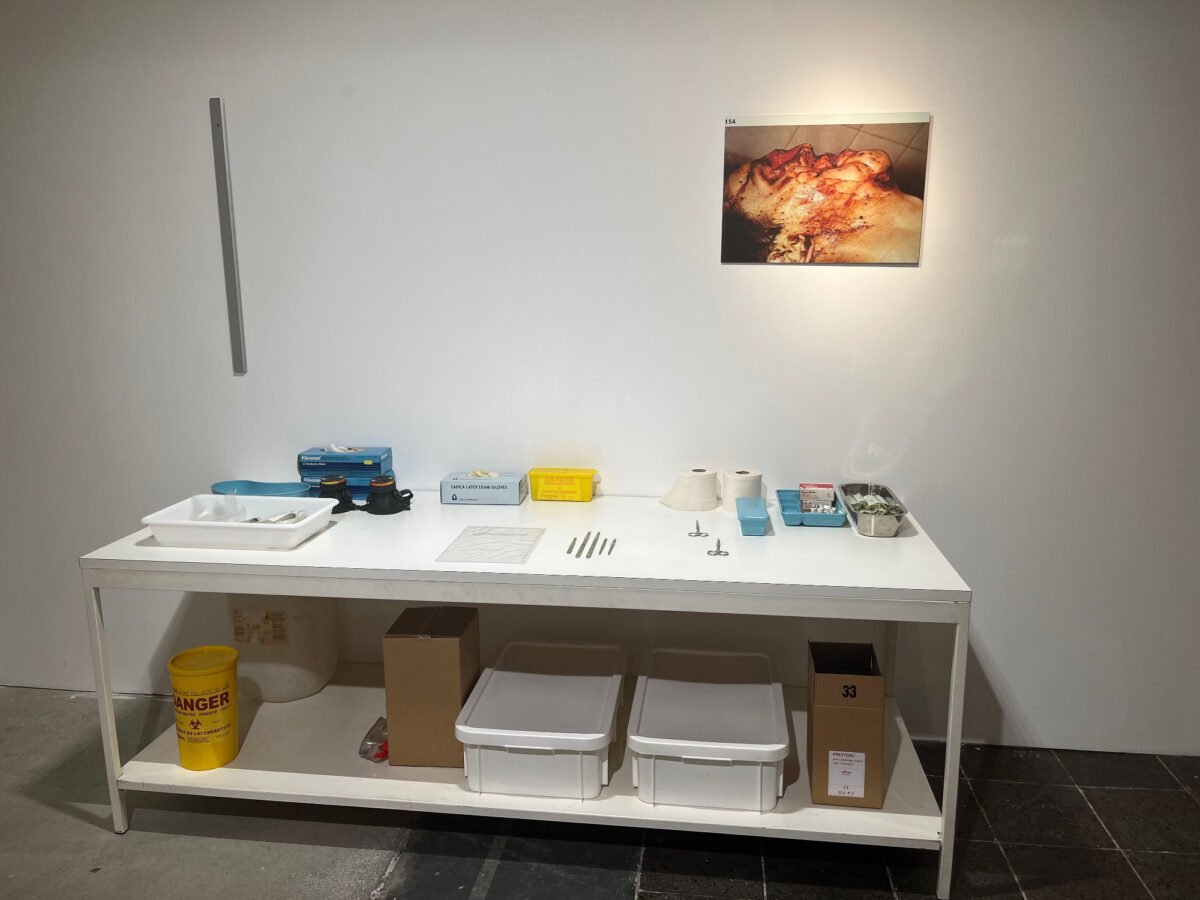

Another noteworthy aspect is Hirst’s personal evolution, from an angsty, angry young man creating works centered on death, trauma, and the futility of life to a sense of contentment. His journey takes us from themes of constant jeopardy and heartbreak to his recent exploration of the beauty of nature in pieces like ‘Cherry Blossoms’ and his flower paintings exhibited at Frieze.
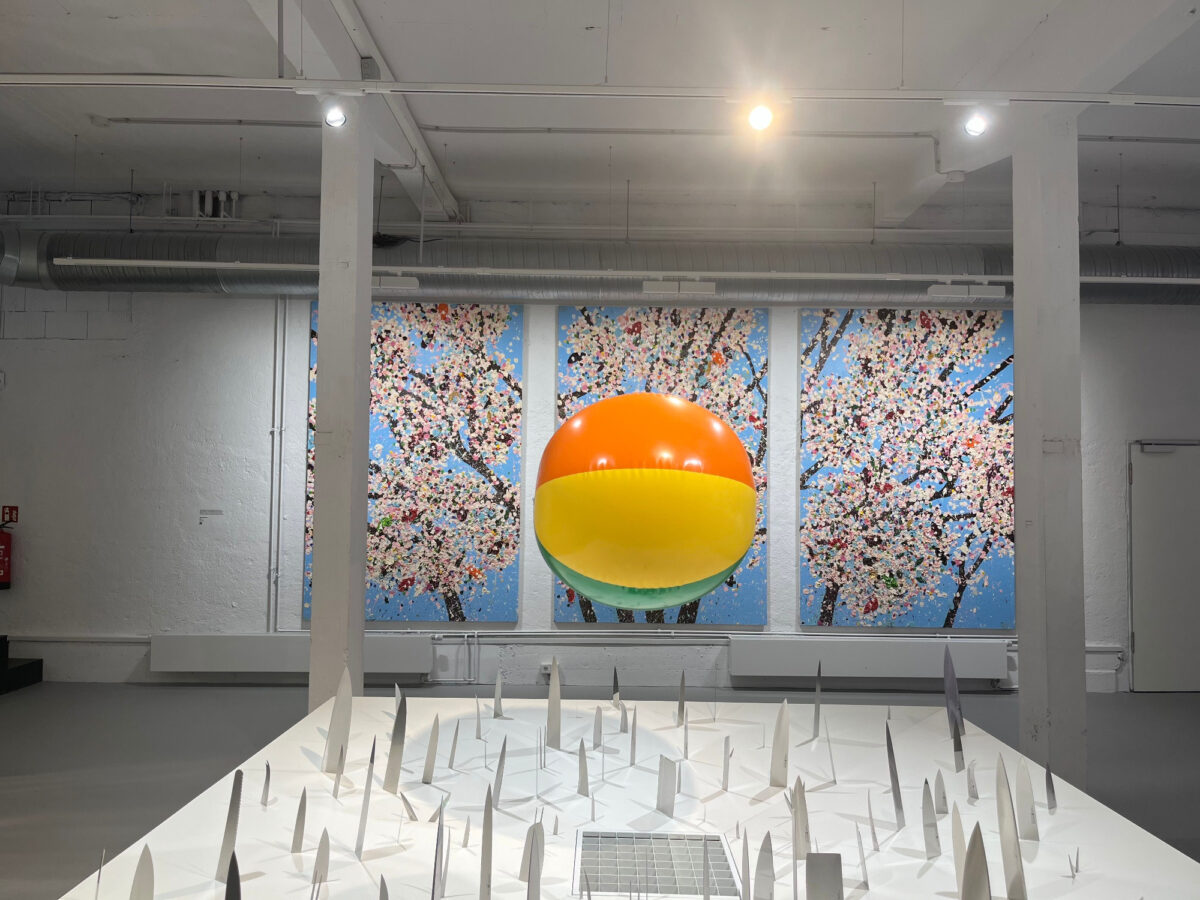
Finally, there is the humour in the darkness usually in the titles of the works my particular favourite is – Yes, But How Do You Really Feel? 1996 (seen below)
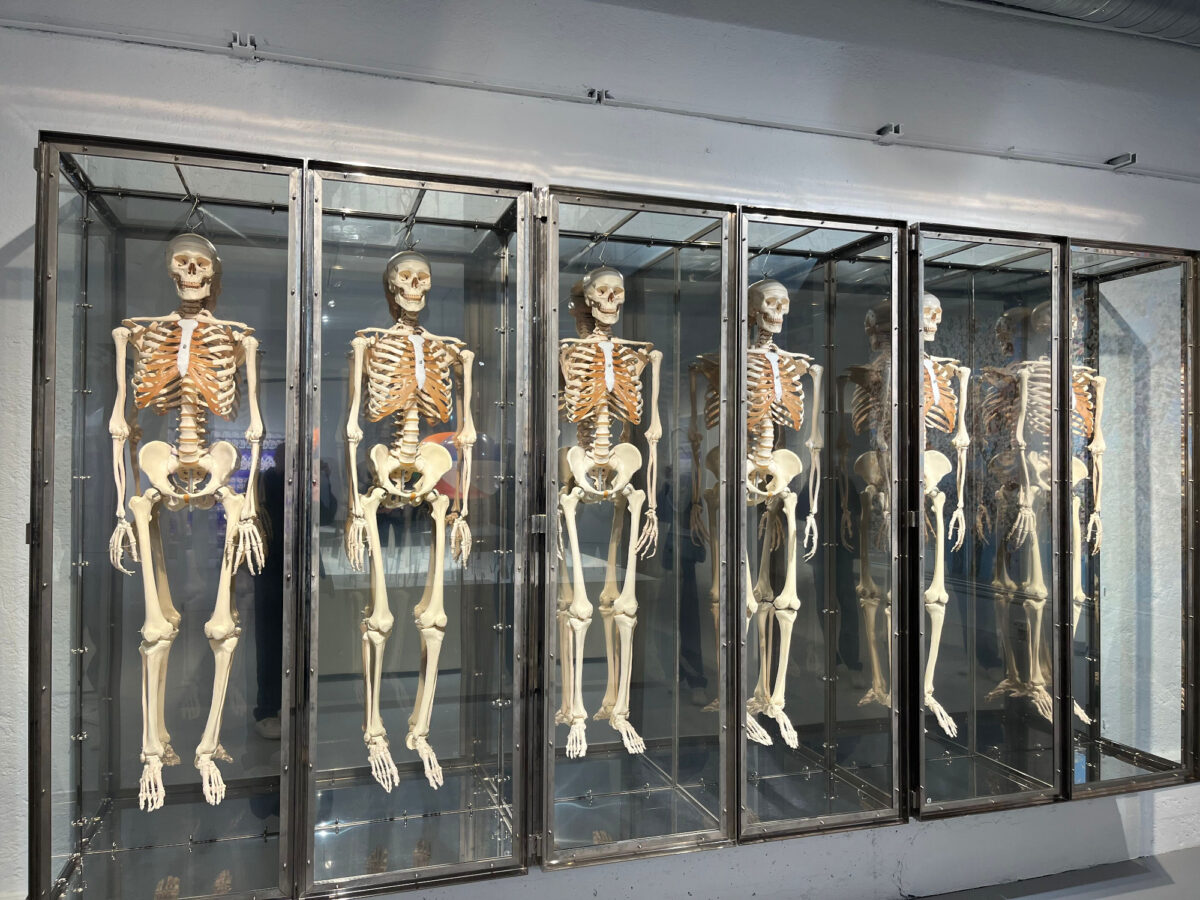
Damien Hirst is one of the world’s most influential artists, his work has transformed the contemporary art world and ignited the imagination of a generation. We are delighted to welcome him to Munich and to give this important and exciting exhibition its debut at MUCA.
Christian Utz, Founder of MUCA
Damien Hirst, ‘The Weight of Things’, MUCA Munich
About the artist
Damien Hirst was born in Bristol and lives and works in London, Devon, and Gloucestershire in the UK. Collections include the Museo d’Arte Contemporanea Donnaregina, Naples, Italy; Museum Brandhorst, Munich; Museum für Moderne Kunst, Frankfurt am Main, Germany; Stedelijk Museum, Amsterdam; Centro de Arte Dos de Mayo, Madrid; Tate, London; Israel Museum, Jerusalem; Astrup Fearnley Museet, Oslo; Gallery of Modern Art, Glasgow, Scotland; National Centre for Contemporary Arts, Moscow; Museum of Modern Art, New York; Hirshhorn Museum and Sculpture Garden, Washington, DC; Art Institute of Chicago; The Broad, Los Angeles; Museo Jumex, Mexico City; and 21st Century Museum of Contemporary Art, Kanazawa, Japan.
Exhibitions include Cornucopia, Oceanographic Museum of Monaco (2010); Tate Modern, London (2012); Relics, Qatar Museums Authority, Al Riwaq (2013); Signification (Hope, Immortality and Death in Paris, Now and Then), Deyrolle, Paris (2014); Astrup Fearnley Museet, Oslo (2015); The Last Supper, National Gallery of Art, Washington DC (2016); Treasures from the Wreck of the Unbelievable, Palazzo Grassi and Punta della Dogana, Venice (2017); Damien Hirst at Houghton Hall: Colour Space Paintings and Outdoor Sculptures, Houghton Hall, Norfolk, England (2019); Mental Escapology, St. Moritz, Switzerland (2021); Cherry Blossoms, Fondation Cartier, Paris (2021); and Archaeology Now, Galleria Borghese, Rome (2021). Hirst received the Turner Prize in 1995.
